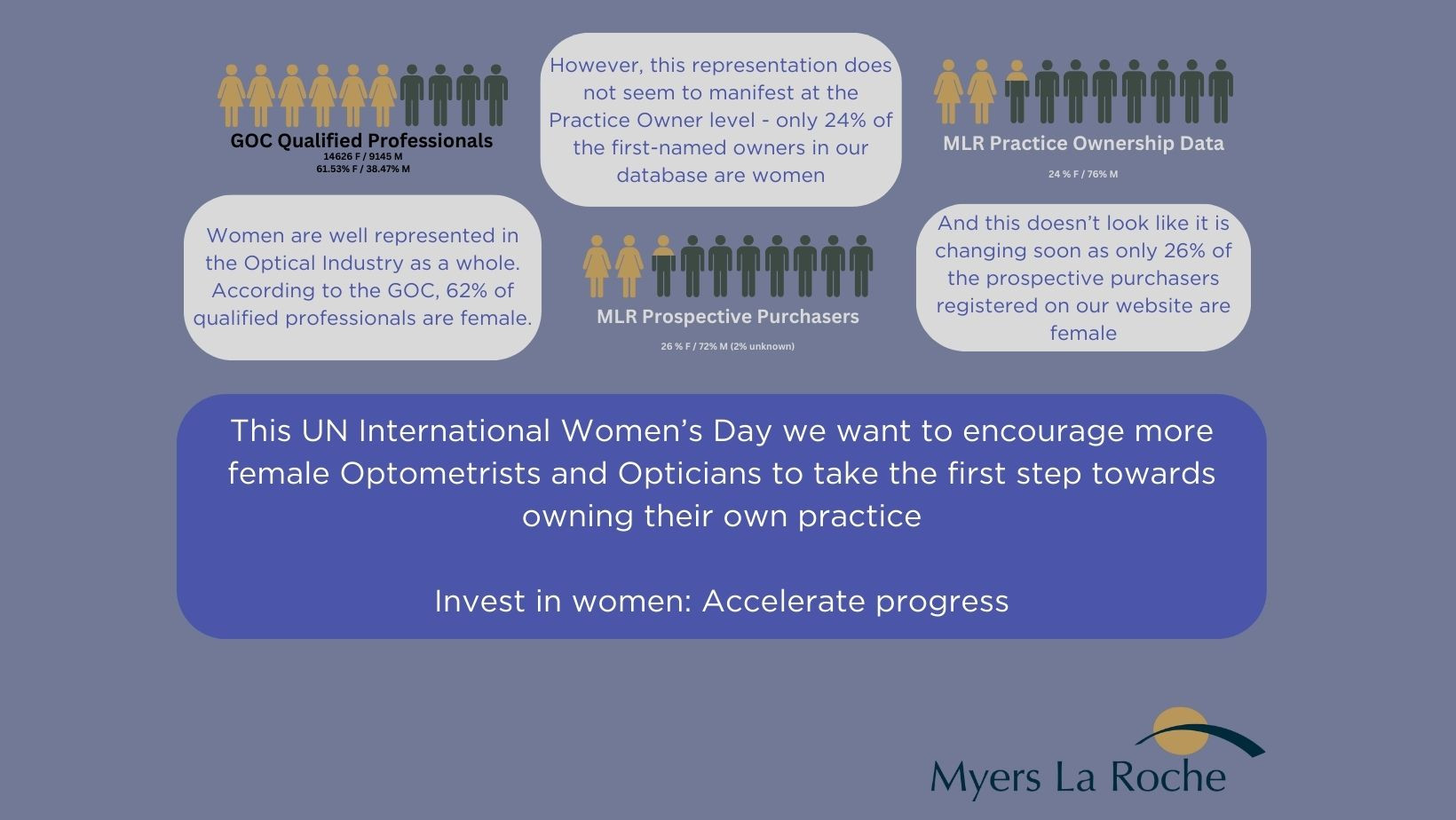There has always been a huge amount of misinformation about practice values.
One major false valuation "rule of thumb" that has persisted for decades is that there is some sort of ratio between turnover and price.
An analysis of the data from over 1,000 transactions which the Myers La Roche team has facilitated does not support any meaningful pattern between turnover and transfer price.
To put this in context, practices transfer for price ratios as low as 20% of turnover, and as high as 120%.
So, let's start with the facts.
There are 2 different categories of practices and each is valued in a very different way.
The first are smaller "lifestyle" practices: enterprises where in reality the owner makes no more money than (and sometimes) less from their business than they could make as an employed clinical professional.
This type of practice is typically priced and sold on the basis of the value of their physical assets. For clarity, this is a relatively small market and one that is NOT experiencing price inflation and is unlikely to do so.
The second category is the larger, more profitable enterprises. These are valued on the basis of their true underlying profitability/cash generation of the practice.
To establish a practice's value, the accounts must be put through a "normalisation" process to factor in the true value of the owner's time input, directors' discretionary drawings and other accounting policy variances and nuances to calculate the adjusted net profit (sometimes called the EBIT or EBITDA).
Both within optics and in other sectors, EBITDA is widely used by professional buyers, advisors and private equity investors to calculate business values as it eliminates impacts of different financing, tax and accounting decisions on how to report profitability and comes up with a comparable proxy for cash generated.
A multiplier is then applied to this normalised/adjusted profit to calculate the value. Typical profit multipliers range from 2 to 5 and are influenced by numerous factors including location, competition, trading trends, genuine unrealised potential, quality of fixtures, fittings and equipment, reliance on the owner/perceived ease of transfer of the goodwill to a new owner etc.
The Danger of Averages
There is no great mystery to either of these two valuation methodologies. However, with the latter, the million dollar question is of course what multiplier to apply to the normalised profits? And there is no simple answer that I can provide, without a detailed analysis of the practice in question.
As you now know, the optical sector is a market of markets, with numerous variables that can make a considerable difference to a practices transfer value. Yet here again we come across another more recent misnomer:
A rule of thumb multiplier or an average multiplier of 3 times adjusted/normalised profit is currently being bandied around by numerous parties ranging from acquiring groups, accountants and even some business valuers. This is a grotesquely over simplistic and inaccurate approach.
There are a host of factors that influence the multiplier and ultimately the price that a buyer will be prepared to pay, and remember the normal range is 2 to 5, although we have seen outliers as high as 8 in the course of our work.
Factors include:
Perception of the repeatability and reliability of future income;
- How closely is the patient goodwill related to the owner and how readily will it transfer to alternative front of house personnel
- Presence and scale of monthly eye care schemes which provide guaranteed monthly cash flow and are indicative of a discerning patient base
- How easy will it be to replace the owner (dependent upon the local clinical human resources pool within c60 minutes' commute from the practice and also whether there are any specialisms being delivered).
- The quality and age of fixtures, fittings and equipment - and the level of future investment that may be required
- Sales and profit trends - is the practice growing, static or declining - whatever the trend, a buyer is likely to extrapolate it, and will heavily factor this into their opinion on what they are prepared to pay.
A couple of examples will quickly illustrate what a difference the multiplier applied to your practice's normalised profit makes:
Crucially, it is important to understand that there may be a strategic benefit for some purchasers buying a particular practice that may make them prepared to pay more than the "technical value" and more than the top of the range for normal industry multiples - for instance if they now, or in the future may be able to merge a practice on the market with one they already own (or are in the process of purchasing).
Some potential acquirers are larger enterprises with better product purchasing power than the seller. They are therefore in a position to immediately make better margins on the existing patient base and trading volumes of their target practices.
They may therefore be prepared to pay a higher multiple (if the seller is skilled in negotiation, or represented by, a skilled negotiator with the right facts and tools to leverage this knowledge) - because in reality, the acquirer is working on the higher projected profit immediately obtainable by implementing their own operating model than the current trading accounts show.
Key takeaways in a rising market
It is important to realise that to achieve the highest possible multiple and therefore the best possible price for a practice requires the introduction of market forces i.e. to offer a practice to market in a competitive bidding situation.
It is also critical to understand that inflation in realisable values for practices involves exceeding historic technical values. In other words, in a rising market there is a lag between technical values and realisable prices.
To put this another way, if you ask a colleague what they achieved for their practice 12 or even 6 months ago and value yours in the same way, you are likely to leave money on the table if you sell your practice without the benefit of competition and market forces.
You also don't know whether they marketed their practice well or achieved an optimal deal in the first place.
Value inflation in the market
Our data indicates that from Q3 of 2018 through to Q4 of 2022 the multiplier began to experience inflation compared to historic norms, with certain types of practices consistently achieving multiples at the higher end of the normal range - at levels previously reserved for strategic purchases.
Put simply, practice owners with profitable businesses of a decent scale risk underselling their practice by as much as 40% if they follow normal conventions - valuing an optical business is not a simple matter
What is driving the upward trend in practice transfer values?
Increases in practice transfer values are being driven by 2 main factors:
- Loose monetary policy and ease of access to cheap finance
- Increased demand
Let's look at both in further detail.
Loose monetary policy / Increased money supply
For the initial period, this price inflation was linked to low Bank of England (BOE) base rates which made money incredibly cheap to borrow. Whilst this has now changed, prices have remained high due to an increase in mergers and acquisitions.
In addition to traditional bank funding, several of the large chains have recently benefitted from corporate finance deals, and a number of smaller groups are also privy to other forms of external investment. These deals have provided them with combined war chests for practice acquisitions running into tens of millions of pounds, which are literally burning a hole in their pockets (or more accurately their balance sheets).
Many of the large glazing companies/lens suppliers also offer funding options which can be a useful source of finance for purchasers. However if you are a potential seller, irrespective of how good you believe your relationship is with them, make sure you read Megatrend Five BEFORE you discuss your exit plans with your supplier.
Increasing demand
Well run independent optical businesses have proved remarkably resilient over the last decade. Even during the cost of living crisis, they have continued to provide excellent profits - and therefore a superb investment yield - for would be buyers.
It is this heady combination of profitability and readily available funding that has increased the number of buyers. Basic economic principles of supply and demand dictate that as the number of buyers increases - relative to the supply of available profitable practices of decent scale - prices rise as buyers compete for the same opportunities.
So who is buying?
As already alluded to, the practice sales market is not a single marketplace, but rather a market of markets. The market for profitable optical practices is busy across all buyer profiles.
The following is a simplified overview of the market place to provide a high-level snapshot, the reality is:
Large / corporate
Most visible and proactive are a number of competing national (self-styled "independent") chains whose models rely exclusively on growth via acquisition, rather than start-up. The largest, most high profile operator in this space has over 150 branches; its accelerating growth is now looking set to overtake Specsavers™ last great acquisition round, as it aggressively converts independents to its franchise model.
Mid-market
A number of smaller regional groups continue to expand locally via acquisitions and mergers.
Small
Operators with as few as one other successful branch of a decent scale may also be interested and have the means to acquire another quality local branch - and may be prepared to pay more for strategic/defensive reasons to keep the larger players out and to ensure they are the strongest independent in their area.
This is a space in the market that should not be overlooked. It is not unusual for an existing owner with as few as one or two highly profitable branches to be able to pay handsomely for an additional local acquisition.
First time buyers
For small to medium sized practices looking to sell, the first time buyer market should always be considered. In many areas there are first time buyers with finance available.
There are many ways to sell a practice, first time buyers often buy practices outright, but for larger practices, an exit and sale may involve selling an initial share of the practice to a clinical professional, with an agreed timetable for them to buy out the remaining shares.
This is classic succession planning, but the practice has to be large and profitable enough to make this a viable option and the chemistry between outgoing and incoming shareholders needs to be good to make this a happy and effective experience.
Read on for Megatrend 2, where we explore how changes to the high street are affecting Opticians practices
More insights for you
Take a read below for further industry insights written by our Myers La Roche team:
Get in Touch
If you are interested in our services, then please call us on the number below:














